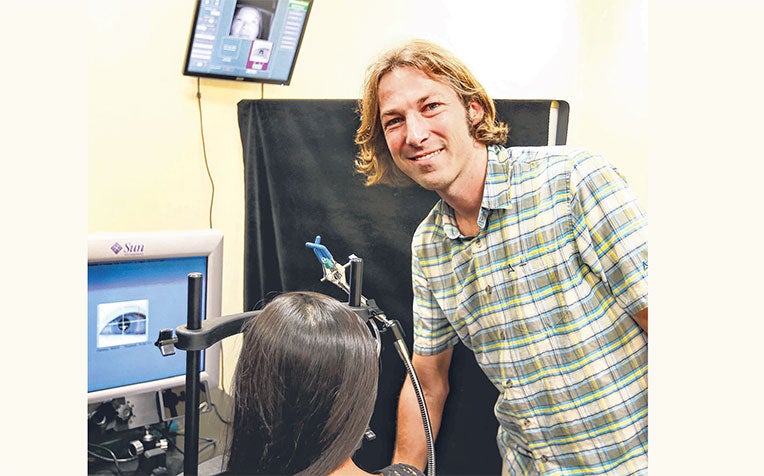
says Assistant Professor Gerrit Maus. When you blink, your eyes move, but the brain compensates by shifting them back to their original position, which keeps the image before you from jumping around. The finding offers insights into how the brain adapts to changes.
Each time someone blinks spontaneously, his eyes roll back into their sockets before returning to the front – all in less than a second.
But the position they assume before and after the blink are not exactly the same, which begs the question: Why don’t the images we see jump around as well?
Scientists have discovered that the image remains steady because the brain has learnt to correct the misalignment, and repositions the eyes during the blink to make up for the change in position.
The study’s lead researcher, Assistant Professor Gerrit Maus, said: “The brain notices that, with every blink, it is making a consistent error and, over time, the system learns to recalibrate itself so the eyes point back to the same point where they started before the blink.”
The study indicates that recalibration is another function of blinking, apart from the traditionally noted dual purpose of lubricating the eyes and protecting them from irritants, said Prof Maus, who is from the division of psychology at Nanyang Technological University (NTU).
The study, done in collaboration with researchers from the University of California at Berkeley, Dartmouth College and L’Universite Paris Descartes, was published earlier this year in the international scientific journal Current Biology.
A dozen adults took part in the study, during which they were asked to look at a single dot. Each time they blinked, the dot was moved 1cm to the right.
After about 30 blinks, said Prof Maus, the brain learns to direct the eyes to look at the spot where it expects the dot to be.
The team will next study if recalibration also occurs during reflexive eye blinks – which happens, for example, when a speck of dust flies into the eye.
Different brain networks control reflexive and spontaneous blinks, and one question the researchers want to answer is whether recalibration can be narrowed down to a particular part of the brain.
“I could imagine that, if a patient had a lesion in a certain area of the brain and saw the world as jumping around, then understanding this mechanism could help him,” said Prof Maus.
Professor Roger Beuerman, who is senior scientific director of the Singapore Eye Research Institute, said the new finding extends the older concept of saccadic eye movements – small micro-adjustments of the eye position due to the ocular muscles – that refresh the image on the retina.
“The ocular motor compensation shown in this paper is larger-scale and provides a way to keep the image in place. In everyday life, of course, it keeps us from, for instance, running into cars or being eaten by some wild animal,” he said.
“It seems trivial but is very important.”
Contributed by














 Get it on Google Play
Get it on Google Play